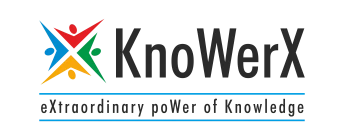Master Inventory Control Tactics That Save Millions!
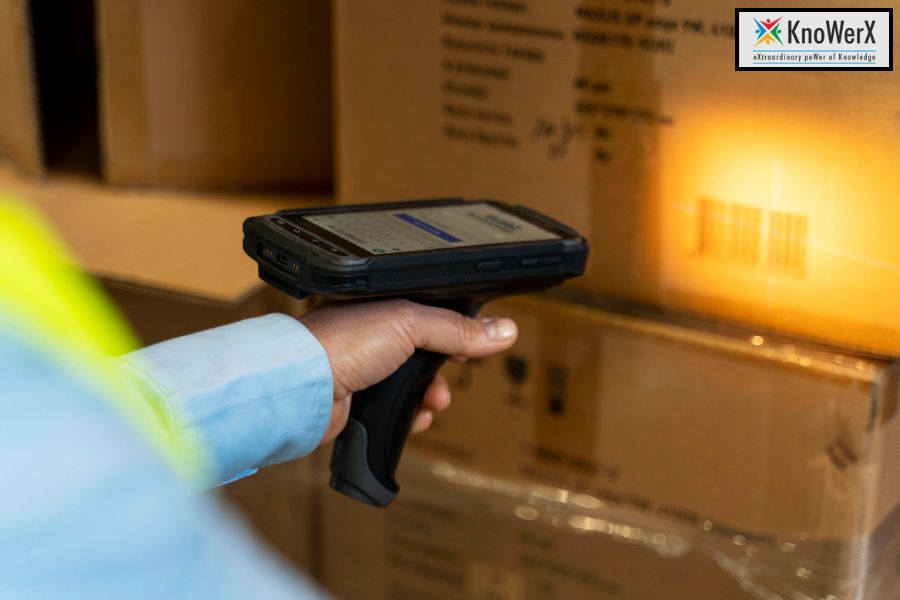
Master Inventory Control Tactics That Save Millions! By KnoWerX – Your Partner in Professional Supply Chain Excellence In today’s volatile and fast-paced supply chain landscape, efficiency isn’t just a competitive advantage it’s a necessity. And right at the heart of this efficiency lies one of the most critical yet often underestimated strategies: Inventory Control. What Is Inventory Control? Inventory Control is more than just keeping track of stock. It’s the strategic management of inventory levels to meet customer demand without overstocking or understocking. It ensures that the right products are available at the right time and place without locking up excess capital. Effective Inventory Control involves forecasting, stock rotation, lead time management, demand planning, and setting optimal reorder points. Imagine a company losing lakhs or even crores due to unsold goods sitting idle in a warehouse. Now imagine another company constantly running out of high-demand products, missing crucial sales. Both scenarios are symptoms of poor Inventory Control. Now imagine being the leader who fixes that, driving millions in savings and success. That’s the power of mastering Inventory Control. Why Is Inventory Control So Crucial? When businesses fail to manage inventory effectively, the cost isn’t just financial—it’s emotional. It’s the stress of overworked staff trying to fix stock issues, the disappointment of customers facing delays, and the frustration of watching profits slip away. Here’s why Inventory Control is crucial for every organisation: Reduces Wastage and Dead Stock: Proper Inventory Control ensures perishable and non-moving items don’t go to waste. Improves Cash Flow: With less capital tied up in unnecessary stock, businesses can reinvest in innovation, marketing, or expansion. Boosts Customer Satisfaction: Meeting demand consistently builds customer loyalty and trust. Enhances Decision Making: Real-time data and accurate stock levels empower better business strategies. Minimises Storage Costs: Holding too much stock increases storage expenses, insurance, and risk of damage. For many businesses, fixing Inventory Control isn’t just about saving money—it’s about saving relationships, reputations, and futures. Master Inventory Control Tactics That Save Millions Here are some emotionally intelligent and practically effective tactics that can transform your inventory management system into a streamlined, profit-generating machine: 1. Forecast with Precision Use data-driven demand forecasting to predict seasonal and market trends. Integrate AI tools and historical data to reduce guesswork. 2. Embrace Just-in-Time (JIT) Systems Implement JIT techniques to minimise waste and reduce storage costs. By receiving goods only as they are needed, you free up capital and space. 3. Classify Inventory Smartly Apply ABC analysis to identify high-priority items. Focus on ‘A’ items (high value, low quantity) to ensure they’re always available. 4. Use Automated Replenishment Tools Set automated reorder points and levels using ERP or specialised Inventory Control software to avoid human error and stockouts. 5. Conduct Regular Audits Cycle counting and physical audits help verify accuracy and identify discrepancies before they become major problems. 6. Train Your Team A well-trained team understands the importance of Inventory Control and acts proactively. Training fosters a culture of accountability and precision. 7. Partner with Experts Don’t go it alone. Seek support from seasoned experts in Inventory Control and supply chain optimisation—like KnoWerX. Why Choose KnoWerX? At KnoWerX, we don’t just teach; we transform careers. Our belief in empowering professionals with practical knowledge and emotional intelligence sets us apart. With over 33 years of collective experience and 26+ years in consultancy and education, our foundation is built on integrity, insight, and impact. Our programs are crafted by industry leaders who’ve worked with Fortune 500 companies, SMEs, and start-ups across India and the globe. When you train with KnoWerX, you gain: Comprehensive Curriculum: Covering all aspects of Inventory Control from basics to advanced. Global Certifications: Enhance your resume with internationally recognised credentials. Hands-On Training: Practical insights, simulations, and real-world case studies. Lifetime Mentorship: We believe in lasting relationships, not just one-time training. Affordable Excellence: We provide premium education at the best price in the industry. Our mission is to uplift professionals—not just by boosting their technical skills but also by shaping their confidence, decision-making, and strategic thinking. When you choose KnoWerX, you choose more than education—you choose transformation. Frequently Asked Questions Ending Remark: Transform Your Career and Company Inventory Control is not just about stockrooms and spreadsheets it’s about safeguarding your company’s future and unlocking your true professional potential. It’s about being the person your team relies on to make decisions that save money, improve service, and drive growth. At KnoWerX, we walk with you on this journey. Join thousands of professionals who have upskilled with us and are now leading change in their organisations. Your future in supply chain excellence starts here. Let Inventory Control be your superpower. Let KnoWerX be your guide. Image Reference: Freepik Disclaimer: All trademarks, logos, and brand names are the property of their respective owners. All company, product, and service names used in this website are for identification purposes only. Use of these names, trademarks, and brands does not imply endorsement.
Get CLTD Online Certification – Your Logistics Career Awaits
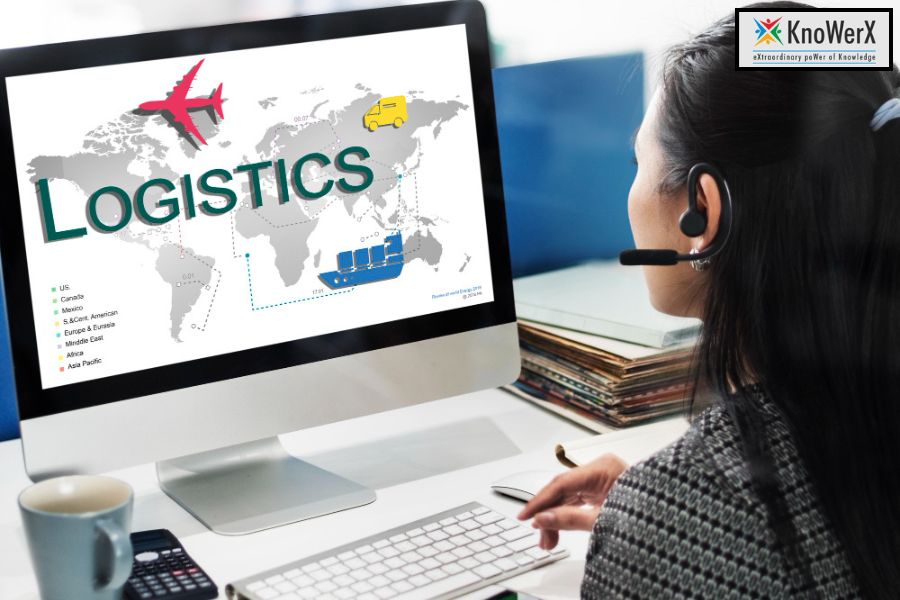
Get CLTD Online Certification– Your Logistics Career Awaits! The global logistics industry is experiencing unprecedented growth, driven by innovations in technology, the rise of e-commerce, and the increasing need for seamless transportation and distribution networks. To stay ahead of the curve, professionals must be equipped with advanced skills and recognised credentials. One such credential that stands out is the CLTD (Certified in Logistics, Transportation and Distribution) certification. Opting for a CLTD online certification gives you the flexibility to master logistics fundamentals and specialised knowledge without disrupting your professional commitments. Whether you aim to lead strategic supply chain operations or enhance your current role, this certification opens doors to endless opportunities in a competitive global market. What Is CLTD? CLTD, which stands for Certified in Logistics, Transportation and Distribution, is a globally recognised certification offered by APICS, a part of the Association for Supply Chain Management (ASCM). It validates your expertise in a wide range of logistics topics, including: Logistics strategy and planning Transportation and distribution management Warehouse operations Inventory and order management Global logistics considerations The CLTD certification is ideal for logistics managers, distribution professionals, supply chain analysts, and anyone aspiring to specialise in logistics. Why Choose a CLTD Online Certification? Flexibility and Convenience One of the biggest advantages of CLTD online certification is its flexibility. You can learn at your own pace, making it perfect for working professionals or students balancing other responsibilities. Access to Digital Resources Online certification programs provide a wealth of digital tools, including interactive study guides, video lessons, eBooks, and online discussion forums. This ensures a comprehensive and engaging learning experience. Remote Exam Options With an online CLTD program, even the exam can be taken remotely. Proctored online tests allow candidates to take the certification exam from the comfort of their home or office. Cost-Effective Learning Online programs often come at a lower cost than in-person training. They also reduce travel expenses, accommodation costs, and time off work, making CLTD online certification a budget-friendly option. Learning Without Geographic Boundaries Since CLTD online certification is accessible from anywhere, it allows individuals from remote or international locations to benefit from top-tier logistics education. Course Structure and Learning Modules The CLTD online certification course is structured into eight main modules: Logistics Overview & Strategy Capacity Planning & Demand Management Order Management Inventory & Warehouse Management Transportation Management Global Logistics Logistics Network Design Reverse Logistics & Sustainability Each module is designed to provide in-depth knowledge and practical insights that professionals can apply directly to their roles. Learners can access case studies, scenario-based questions, and real-world examples to reinforce concepts and apply them in their organisations. Career Opportunities After CLTD Certification Pursuing a CLTD online certification significantly enhances your career prospects. Here are some of the job roles you can pursue: Logistics Manager Distribution Centre Supervisor Supply Chain Analyst Inventory Control Specialist Transportation Manager With global logistics becoming increasingly complex, certified professionals are in high demand across various industries, including retail, manufacturing, healthcare, and e-commerce. Higher Salary Potential CLTD-certified professionals often command higher salaries due to their specialised knowledge and credibility in logistics. Global Recognition The certification is recognised internationally, opening doors to global career opportunities and cross-border job roles. Opportunity to Lead Professionals with a CLTD online certification are more likely to be entrusted with leadership roles and strategic responsibilities in logistics operations. Key Benefits of CLTD Online Certification Enhances Professional Credibility Being CLTD-certified showcases your commitment to professional development and your competence in handling complex logistics functions. Helps in Decision-Making The certification equips you with tools and strategies that improve decision-making, reduce costs, and increase supply chain efficiency. Keeps You Updated The dynamic logistics environment demands continuous learning. A CLTD online certification helps you stay updated with global trends and best practices. Improves Operational Efficiency Certified professionals often introduce efficient processes in transportation, warehousing, and inventory management, contributing to an organisation’s bottom line. Builds Confidence and Problem-Solving Skills Through structured learning and practical assessments, CLTD online certification enhances your ability to solve real-world logistics challenges. Tips to Succeed in CLTD Online Preparation Set a Study Schedule: Allocate time daily or weekly for your studies and stick to it. Use Official Resources: Invest in official CLTD Learning Systems and exam simulators. Join Online Forums: Participate in CLTD study groups or forums for peer support. Take Practice Tests: These simulate the real exam environment and boost confidence. Engage with Instructors: When available, make the most of instructor-led sessions to clarify doubts. Review Regularly: Frequent revision of topics ensures better retention and understanding. Why Choose KnoWerX for Your CLTD Journey? KnoWerX is a leading provider of Supply Chain Management and logistics training in India. Here’s why it’s the ideal partner for your CLTD online certification journey: Expert Faculty: Industry professionals with real-world experience Flexible Learning Options: Self-paced and instructor-led online programs Official APICS Learning Partner: Ensures access to authentic and updated material Support & Mentorship: Continuous guidance through your learning journey Proven Success: High pass rates and excellent student feedback Career Guidance: KnoWerX offers support even after certification to help professionals make the most of their qualifications Frequently Asked Questions Ending Notes The logistics industry is evolving, and the demand for certified professionals is at an all-time high. Getting your CLTD online certification not only boosts your knowledge but also positions you as a competent, future-ready professional. Whether you’re just starting or looking to climb higher in your logistics career, now is the time to act. With KnoWerX, you gain more than just training; you gain a trusted partner in your professional journey. Start your CLTD online certification today and unlock a world of opportunities. Your logistics career awaits! Image Reference: Freepik Disclaimer: All trademarks, logos, and brand names are the property of their respective owners. All company, product, and service names used in this website are for identification purposes only. Use of these names, trademarks, and brands does not imply endorsement.
Unlock Career Growth: Top Benefits of APICS CPIM 8.0

Unlock Career Growth: Top Benefits of APICS CPIM 8.0! In today’s fast-paced, globalised world, managing supply chains efficiently is more critical than ever. The APICS Certified in Planning and Inventory Management (CPIM) 8.0 is one of the most respected certifications for supply chain professionals. With a refreshed structure and updated content, CPIM 8.0 is tailored to match the evolving demands of modern industry. In this article, we explore the benefits of APICS CPIM 8.0, covering how it impacts professional development, enhances learning, and boosts business outcomes. Understanding the APICS CPIM 8.0 Certification What Is CPIM 8.0? APICS, now part of the Association for Supply Chain Management (ASCM), developed CPIM (Certified in Planning and Inventory Management) to validate an individual’s expertise in operations and supply chain. The 8.0 version is the latest iteration, combining decades of industry insights with current trends and technologies. This version simplifies the previous two-part exam into a single, unified format and focuses more on real-world applications, strategic thinking, and digital competencies. The benefits of APICS CPIM 8.0 extend far beyond passing an exam—they enhance career readiness, decision-making skills, and operational efficiency. Enhanced Curriculum and Updated Content Aligned with Global Supply Chain Practices One of the standout benefits of APICS CPIM 8.0 is its alignment with today’s global supply chain standards. Unlike earlier versions, CPIM 8.0 incorporates frameworks used by top multinational companies and integrates concepts such as: Integrated business planning Enterprise resource planning (ERP) Sales and operations planning (S&OP) Digital supply chain transformation This ensures that professionals are learning the most up-to-date methodologies and strategies used in the real world. Relevance to Current Business Challenges CPIM 8.0 addresses pressing challenges faced by supply chains globally, such as disruptions, inflation, inventory volatility, and digital automation. This modern focus equips professionals with the tools to respond effectively to rapid changes, making the benefits of APICS CPIM 8.0 crucial in a VUCA (Volatile, Uncertain, Complex, and Ambiguous) environment. Improved Learning Experience Streamlined Structure for Better Focus One of the most user-friendly benefits of APICS CPIM 8.0 is its revamped structure. Instead of two separate modules, CPIM 8.0 features a single, cohesive learning path. This streamlined approach helps learners maintain focus and momentum, reducing the time and effort required to prepare. Flexibility with Online Learning Tools CPIM 8.0 offers blended learning experiences with online courses, mobile-friendly content, self-paced modules, and virtual simulations. These tools allow working professionals to prepare without disrupting their schedules. With these features, the benefits of APICS CPIM 8.0 make certification more accessible to a wider range of learners, from recent graduates to senior managers. Practice Tests and Assessments Interactive assessments and mock exams allow learners to gauge their understanding and identify areas that need improvement. These features enhance retention and confidence, making the benefits of APICS CPIM 8.0 evident throughout the learning process. Career Advancement Opportunities Recognition Across Industries The CPIM 8.0 certification is globally recognised and respected across industries including manufacturing, logistics, healthcare, automotive, and retail. Having this credential on your resume increases credibility and positions professionals as supply chain experts. One of the primary benefits of APICS CPIM 8.0 is that it signals to employers that you possess advanced planning and inventory management capabilities. Path to Promotions and Pay Raises Professionals with CPIM certification are more likely to receive promotions, take on leadership roles, and command higher salaries. Studies have shown that certified individuals earn up to 27% more than their non-certified peers. These tangible outcomes are among the most rewarding benefits of APICS CPIM 8.0 for career growth. Strategic Decision-Making Skills CPIM 8.0 fosters critical thinking and problem-solving, especially in supply chain design, capacity planning, and inventory control. Professionals gain the ability to make data-driven decisions that positively impact their organisation’s bottom line. This strategic mindset is one of the transformative benefits of APICS CPIM 8.0. Organisational Benefits Increased Operational Efficiency Employers who encourage their teams to pursue CPIM certification report significant improvements in productivity and efficiency. CPIM 8.0 provides knowledge that helps streamline workflows, optimise inventory levels, and reduce waste. These are measurable benefits of APICS CPIM 8.0 at the organisational level. Enhanced Collaboration and Communication Certified professionals understand the language of supply chain across departments, which improves cross-functional communication. From procurement to production and sales, CPIM 8.0 helps integrate the entire supply chain ecosystem. This harmonisation is among the most practical benefits of APICS CPIM 8.0 for businesses. Risk Mitigation and Business Resilience With modules focused on risk management, contingency planning, and supply chain continuity, CPIM 8.0 prepares individuals to manage uncertainties. Organisations with CPIM-certified professionals are better equipped to handle disruptions, making this one of the most strategic benefits of APICS CPIM 8.0. Validation of Professional Expertise Internationally Recognised Credential The CPIM 8.0 is not just another certification it’s a mark of excellence. Whether you’re in India, the USA, the Middle East, or Europe, the credential speaks the universal language of supply chain proficiency. This broad recognition is among the key benefits of APICS CPIM 8.0 for those looking to work globally. Demonstrates Commitment to Professional Growth Earning the CPIM 8.0 certification showcases a proactive attitude toward learning and professional development. It demonstrates that a candidate is committed to mastering the intricacies of supply chain management. This perception among employers is one of the subtle yet powerful benefits of APICS CPIM 8.0. Builds Confidence and Credibility CPIM-certified professionals often take on mentoring roles within their organisations. Their certification gives them the confidence to guide others, take initiative, and lead projects. This development of leadership capabilities further adds to the benefits of APICS CPIM 8.0. Competitive Advantage in the Job Market Preferred by Recruiters With the rise of supply chain digitisation, companies are looking for certified professionals who understand integrated systems. Recruiters often prefer candidates with CPIM credentials, making job applications more competitive. One of the leading benefits of APICS CPIM 8.0 is that it boosts visibility and appeal in the job market. Cross-Functional Role Opportunities Beyond traditional supply chain roles, CPIM 8.0 opens doors to careers in procurement, demand
Discover How Product Design Drives SCM Success!

Discover How Product Design Drives SCM Success! In the modern landscape of Supply Chain Management (SCM), product design is no longer just a concern of the engineering department. Instead, its influence ripples across the entire supply chain from sourcing to production, and delivery to customer satisfaction. Understanding the Product Design Influence in SCM is vital for professionals aiming to streamline operations, reduce costs, and enhance efficiency. At KnoWerX, we believe mastering this interrelationship is key to supply chain success. Here are practical tips to help professionals unlock the power of product design in SCM. Integrate Product Design Early in Supply Chain Strategy One of the most effective ways to utilise product design influence in SCM is to involve supply chain experts during the initial stages of product development. By including logistics, procurement, and manufacturing teams in early design discussions, companies can: Minimise production complexities Select materials that are cost-effective and readily available Ensure designs are compatible with existing production capabilities This integration fosters a design that supports efficient supply chain operations, rather than hindering them. Design for Manufacturability and Assembly (DFMA) A core principle highlighting the product design influence in SCM is Design for Manufacturability and Assembly. DFMA focuses on simplifying product structure, reducing parts count, and standardising components. These design decisions help: Lower manufacturing and assembly costs Reduce supply chain lead times Improve product reliability By applying DFMA, organisations can optimise their supply chain networks and deliver better value to customers. Focus on Sustainable Design for Greener Supply Chains Sustainability is becoming a critical performance metric in supply chain strategies. A product that is designed with recyclable materials, energy-efficient features, and minimal waste generation significantly contributes to SCM success. The product design influence in SCM can be leveraged to: Reduce environmental footprint Comply with global regulations Appeal to eco-conscious consumers Designing for sustainability not only builds brand reputation but also introduces operational savings in packaging, transportation, and disposal. Simplify the Bill of Materials (BOM) An overly complex BOM can result in sourcing issues, inventory bottlenecks, and higher procurement costs. Simplifying BOM through intelligent product design helps SCM by: Streamlining supplier management Minimising risk from part shortages Enhancing flexibility in global sourcing A simplified BOM reflects a conscious application of product design influence in SCM, making inventory control and production planning more agile. Leverage Modular Design for Customisation and Scalability In today’s dynamic market, customers demand customisation without the wait. Modular product design enables businesses to deliver personalised products while keeping costs and lead times under control. Modularisation, as part of the product design influence in SCM, allows for: Mass customisation at scale Quicker product revisions Easier upgrade paths and servicing This approach aligns product development with agile SCM practices and market responsiveness. Align Design with Packaging and Transportation Needs Product dimensions, weight, and durability significantly impact packaging, storage, and transport. An efficient design considers these logistics factors to reduce handling and shipping costs. To harness the product design influence in SCM, design teams should: Optimise product shapes for container utilisation Ensure robustness for fewer damages during transit Choose lightweight materials to reduce freight costs These considerations directly affect delivery timelines and cost-to-serve metrics. Incorporate Digital Prototyping and Simulation Technology offers powerful tools to evaluate the product design influence in SCM before physical production begins. Using simulation and digital twins allows for: Predicting supply chain bottlenecks Assessing manufacturability and logistics impact Enhancing cross-functional collaboration Digital prototyping reduces costly iterations and speeds up time-to-market. Train Supply Chain Teams in Product Design Fundamentals To truly capitalise on the product design influence in SCM, it’s crucial that supply chain professionals understand basic product design principles. At KnoWerX, our specialised training programs bridge this knowledge gap by: Offering real-world case studies Teaching design-thinking integration in SCM Equipping professionals with strategic tools When SCM professionals understand product design, they can proactively contribute to development processes and drive better supply chain outcomes. Freqently Asked Questions Ending Notes: Empowering SCM Success Through Design-Driven Thinking The design influence in SCM is undeniable. From cost savings and lead time reduction to sustainability and customer satisfaction, well-thought-out designs can be the key to unlocking supply chain excellence. At KnoWerX, we’re committed to preparing professionals to make informed, design-conscious decisions that drive measurable SCM success. Whether you’re a supply chain professional, designer, or operations manager, understanding the synergy between product design and supply chain management is essential for long-term growth. Join KnoWerX and explore our industry-leading certification programs and workshops that blend technical skill with strategic vision. Discover how product design drives SCM success with KnoWerX by your side. Image Reference: Freepik Disclaimer: All trademarks, logos, and brand names are the property of their respective owners. All company, product, and service names used in this website are for identification purposes only. Use of these names, trademarks, and brands does not imply endorsement.
Play & Learn: Top Supply Chain Strategic Game
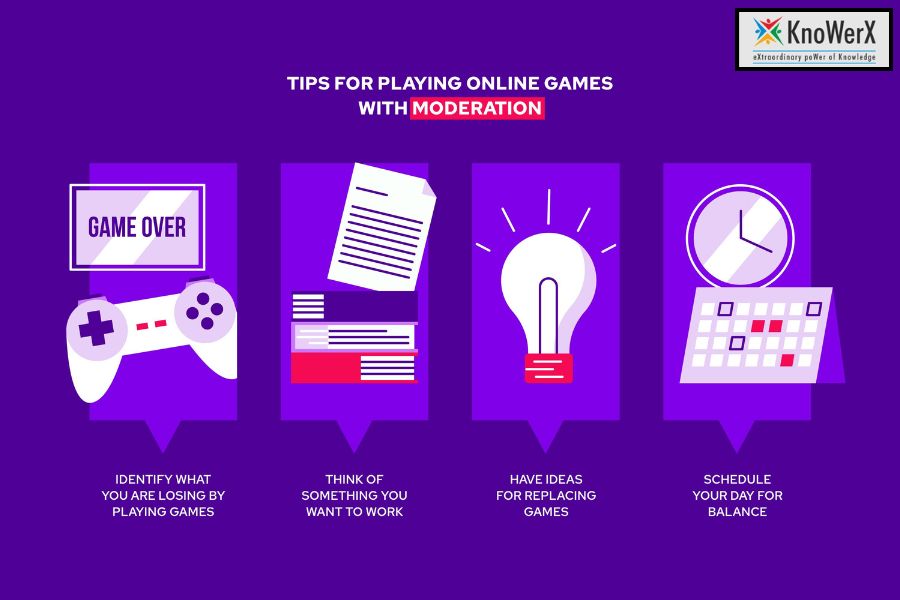
Play & Learn: Top Supply Chain Strategic Game – Tips for Success By KnoWerX – Your Partner in Professional Supply Chain Education In today’s fast-evolving world of logistics, operations, and global trade, a well-rounded understanding of supply chain strategies is more crucial than ever. One of the most effective and engaging ways to grasp complex concepts is through interactive learning. That’s where a Supply Chain Strategic Game comes into play literally. At KnoWerX, we believe that learning should be both impactful and enjoyable. With over 33 years of combined experience in the industry and more than 26 years in education and consultancy, we’ve recognised the immense value that gamification brings to the learning process. Our Supply Chain Strategic Game has been specially designed to help professionals learn real-world concepts through simulation, decision-making, and teamwork. Here are some valuable tips to help you play and learn effectively through this top-rated Supply Chain Strategic Game. 1. Understand the Game Objective Before You Start Before diving in, make sure you understand what the Supply Chain Strategic Game is designed to teach. Is the focus on managing demand and supply? Forecasting? Collaboration? Inventory control? Knowing the objective allows you to align your strategy from the beginning. At KnoWerX, our game is built to simulate end-to-end supply chain activities, enabling players to experience everything from procurement to customer satisfaction. 2. Embrace the Learning Curve – It’s a Game, Not a Test The best part about using a Supply Chain Strategic Game as a learning tool is that it provides a safe space to make decisions, take risks, and learn from outcomes without real-world consequences. Don’t hesitate to try new strategies during gameplay. Whether you succeed or fail, you’re gaining valuable insights into how supply chains function under different scenarios. 3. Collaborate, Don’t Compete While games often bring out a competitive spirit, the real value of this game lies in teamwork. Supply chain success depends on collaboration across departments and stakeholders. The Supply Chain Strategic Game mirrors this dynamic. Work closely with your team, communicate clearly, and make joint decisions to optimise outcomes. This teamwork experience mirrors real-life operations and enhances your leadership skills. 4. Keep Track of KPIs and Metrics During gameplay, you’ll encounter key performance indicators (KPIs) such as service levels, lead times, stockouts, and cost per unit. Monitor these closely, as they’ll help you adjust your decisions and strategies in real time. Understanding these metrics is essential not only for winning the Supply Chain Strategic Game but also for developing analytical thinking a core skill in supply chain management. 5. Think End-to-End, Not in Silos An effective supply chain strategy considers the entire process from supplier to customer. Many new players tend to focus only on their specific part of the game. However, the real win comes from thinking end-to-end. Anticipate how one function impacts the next and align your planning, inventory, and execution accordingly. This holistic approach is at the heart of what we teach at KnoWerX. 6. Reflect After Each Game Session Reflection is the key to turning game experience into real learning. After each round or session of the Supply Chain Strategic Game, take a moment to debrief. What worked well? What caused bottlenecks? What could have been done differently? At KnoWerX, we guide participants through detailed analysis and feedback, helping them connect gameplay lessons with real-world challenges. 7. Apply Game Learnings to Your Job Role The ultimate goal of the Supply Chain Strategic Game is not just to win within the game but to enhance your real-life decision-making. Take the lessons you’ve learned — whether it’s demand planning accuracy, supplier collaboration, or cost control and apply them to your actual work environment. This bridge between theory and practice is where the true value of gamification lies. 8. Stay Updated and Re-Engage Regularly Supply chains evolve constantly with new technologies, global events, and customer expectations. The Supply Chain Strategic Game at KnoWerX is updated regularly to reflect current industry trends. We encourage professionals to re-engage with the game periodically to sharpen their skills, gain new perspectives, and stay relevant in the field. 9. Use the Game to Prep for Certification If you’re planning to take professional certifications such as CPIM, CSCP, or CLTD, the Supply Chain Strategic Game is an excellent preparatory tool. It reinforces theoretical knowledge through practical experience, helping you understand concepts in a real-world context. At KnoWerX, we integrate the game into our learning modules to make certification prep more comprehensive and interactive. 10. Don’t Play Alone – Learn from Industry Experts While the game can be played in teams or individually, one of the biggest advantages at KnoWerX is our expert facilitation. Our trainers, with decades of industry and training experience, guide participants throughout the game to ensure maximum value. They provide strategic advice, help identify learning gaps, and suggest ways to improve your decision-making. Frequently Asked Questions Ending Remarks Interactive learning is the future of professional education, and the Supply Chain Strategic Game by KnoWerX is the perfect blend of fun and functionality. Whether you’re a budding professional or a seasoned supply chain manager, this game offers an enriching experience to test your skills, learn from peers, and build strategies that mirror real-world supply chains. At KnoWerX, we are dedicated to transforming professionals into industry leaders through world-class training, hands-on tools, and strategic simulation games. Ready to play and learn? Join us and take your supply chain skills to the next level! Image Reference: Freepik Disclaimer: All trademarks, logos, and brand names are the property of their respective owners. All company, product, and service names used in this website are for identification purposes only. Use of these names, trademarks, and brands does not imply endorsement.
Supply Chain Management Quiz – Test Your Skills & Take This Fun
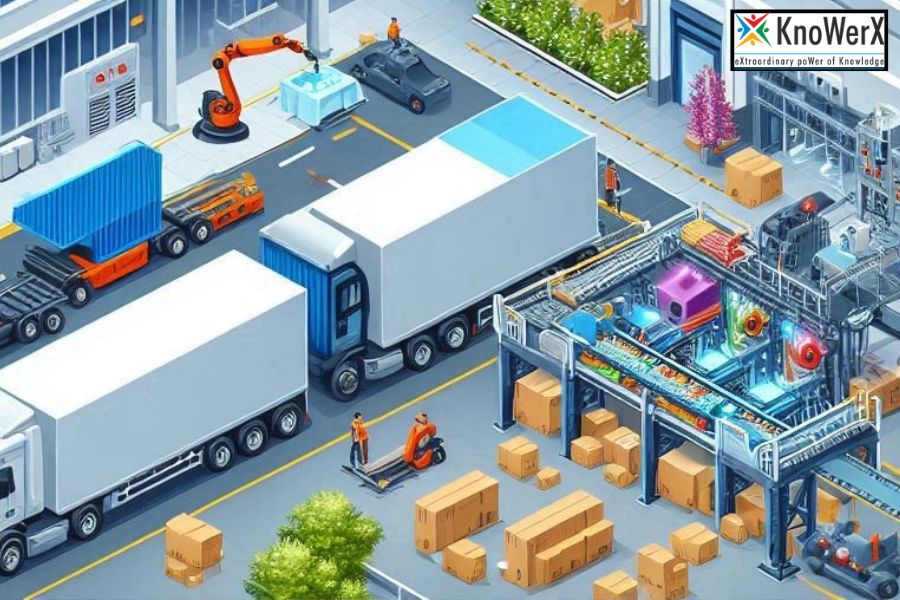
Test Your Skills: Take This Fun Supply Chain Management Quiz Now! In the ever-evolving world of logistics, distribution, and global commerce, supply chain professionals must remain sharp and updated with current trends, best practices, and foundational knowledge. One of the most engaging and effective ways to do that is through interactive tools such as a supply chain management quiz. Whether you’re a seasoned professional or just beginning your journey, this quiz can help test your understanding and uncover knowledge gaps you didn’t know you had! At KnoWerX, we understand the value of continuous learning and assessment. That’s why we’ve developed a free supply chain management quiz designed to challenge, educate, and engage learners at all levels. But before you jump into the quiz, here are some expert tips to maximise your experience. Know Why a Supply Chain Management Quiz Matters A supply chain management quiz is not just a fun game; it’s a smart tool to evaluate your current knowledge. From demand forecasting to procurement, logistics, inventory control, and risk management quizzes help reinforce what you already know and expose areas that need improvement. This kind of self-assessment is essential if you’re preparing for certifications like CPIM, CLTD, or CSCP. Taking the time to test your skills using a supply chain management quiz can give you a clearer picture of where you stand in your professional development journey. Set a Focus Area Before Starting Supply chain management is a vast domain. Before attempting any supply chain management quiz, determine what area you want to focus on logistics, sourcing, production, demand planning, or overall strategy. This helps in narrowing your study efforts and making your quiz results more meaningful. KnoWerX offers resources and training modules aligned with these focus areas to support your learning journey. Use the Quiz as a Pre-Certification Diagnostic Tool Thinking of enrolling in a certification course like APICS CPIM or CLTD? Great! But before investing your time and money, it’s wise to gauge your preparedness through a supply chain management quiz. It acts as a diagnostic tool that highlights strengths and pinpoints weaknesses. The KnoWerX quiz is expertly curated to reflect real-world scenarios and certification-level questions. Don’t Rush – Understand the Logic Behind Each Question The aim of a supply chain management quiz isn’t just to click the correct answer but to understand why it’s correct. Use every quiz attempt as a learning opportunity. At KnoWerX, we encourage learners to review both right and wrong answers to solidify conceptual understanding. It’s all about building long-term expertise, not just scoring points. Make It a Regular Practice Just like any professional skill, consistency is key. Make it a habit to take a supply chain management quiz weekly or monthly. Each attempt will reinforce previously learned concepts and introduce new perspectives. It’s also a great way to stay updated with evolving trends and terminology in the supply chain domain. KnoWerX updates its quiz section regularly, so professionals like you always have access to fresh content that reflects current industry standards. Pair Your Quiz Results with KnoWerX Training Programs Taking a supply chain management quiz is just the start. What you do with your results matters more. If you discover areas where you scored low, consider enrolling in KnoWerX’s certified training programs. With over 26 years of consultancy and training experience, we’ve helped thousands of professionals in India and abroad elevate their SCM expertise. Our faculty brings real-world insights and global experience to every class, making your learning both practical and industry-relevant. Challenge Your Peers Make the quiz even more engaging by sharing it with your colleagues or team. A little friendly competition can spark discussions, foster collaborative learning, and enhance team-wide performance. Encourage your team to take the KnoWerX supply chain management quiz and compare results. It’s a great way to build team capabilities while having fun! Align Quiz Practice with Career Goals Whether you aim to become a Supply Chain Manager, Demand Planner, Logistics Coordinator, or Operations Head, aligning your supply chain management quiz practice with your career goal is crucial. Use the quiz to test role-specific competencies and plan your learning pathway accordingly. KnoWerX’s learning resources and certifications are tailored to diverse career paths in the SCM industry. Stay Curious and Keep Learning Finally, stay hungry for knowledge. The supply chain world is evolving with technology integrations like AI, blockchain, and IoT. A supply chain management quiz helps you remain aware and curious about these emerging trends. And when you’re ready to take the next step, KnoWerX is here with industry-leading courses to help you master tomorrow’s supply chain. Frequently Asked Questions Ending Remarks A supply chain management quiz isn’t just about testing what you know it’s about growing what you know. At KnoWerX, we believe that learning should be continuous, engaging, and aligned with professional growth. With our free quiz, you get a fun, interactive way to measure your knowledge and act to improve it. Test your skills. Take this fun supply chain quiz now. It could be the first step toward your next big career breakthrough! Image Reference: Freepik Disclaimer: All trademarks, logos, and brand names are the property of their respective owners. All company, product, and service names used in this website are for identification purposes only. Use of these names, trademarks, and brands does not imply endorsement.
Top 10 Best Procurement Strategies for 2025 Success

Best Procurement Strategies for 2025 Success: Expert Tips from KnoWerX As we approach 2025, procurement is becoming increasingly dynamic. Businesses worldwide are evolving rapidly due to technological advancements, changing consumer demands, supply chain disruptions, and the need for sustainability. At KnoWerX, we believe that embracing the right procurement strategies is the key to staying ahead. With over 33 years of collective experience in supply chain education and consultancy, we bring you the most effective and future-ready procurement strategies to help you succeed in 2025 and beyond. Embrace Digital Procurement Solutions Digital transformation is no longer optional. One of the most effective procurement strategies for 2025 is leveraging technology to streamline procurement processes. Digital tools like e-procurement platforms, procurement analytics, and AI-powered sourcing applications help companies reduce lead times, improve accuracy, and gain better visibility. How KnoWerX can help: Our training programmes include modules on digital procurement, offering professionals the skills they need to implement smart procurement technologies confidently. Adopt a Supplier Collaboration Model Strong supplier relationships are at the heart of successful procurement. Moving from a transactional to a collaborative model is a powerful shift in procurement strategies. Building trust, ensuring regular communication, and involving suppliers in innovation processes helps reduce risks and enhances efficiency. 2025 Insight: Collaborating with suppliers on sustainability goals, innovation, and risk-sharing will be vital for resilient supply chains. Focus on Strategic Sourcing Strategic sourcing remains a cornerstone of successful procurement strategies. It involves a deep analysis of spend categories, supplier capabilities, market conditions, and long-term organisational goals. In 2025, companies must take a holistic approach to sourcing that aligns with sustainability, cost, and compliance objectives. Pro Tip: Use tools like spend analysis software and category management frameworks to optimise sourcing decisions. Prioritise Risk Management and Resilience The COVID-19 pandemic, global conflicts, and climate change have exposed vulnerabilities in global supply chains. One of the most important procurement strategies for 2025 is to integrate risk management into procurement planning. Identify critical suppliers, diversify sourcing regions, and build contingency plans. What KnoWerX Recommends: Learn how to build supply chain resilience through our specialised risk management training programs. Emphasise Total Cost of Ownership (TCO) When developing procurement strategies, looking beyond the initial purchase price is essential. TCO considers acquisition costs, maintenance, operation, and disposal costs. TCO-based decision-making ensures long-term value rather than short-term savings. Action Plan: Train your procurement team to evaluate TCO effectively and use it as a decision-making criterion. Implement Sustainable Procurement Practices Sustainability is no longer a buzzword; it’s a business imperative. Future-proof procurement strategies must include sustainable practices such as sourcing eco-friendly materials, selecting ethical suppliers, and reducing carbon emissions in logistics. KnoWerX Insight: Our courses are designed to educate professionals on green procurement frameworks, ESG (Environmental, Social, and Governance) goals, and how to align procurement with sustainability targets. Use Data-Driven Decision Making Procurement in 2025 will be driven by data. Leveraging big data analytics to understand supplier performance, market trends, and customer behaviour is a must. One of the critical procurement strategies for this decade is building procurement dashboards and KPIs. Tools to Consider: Power BI, Tableau, SAP Ariba, and Coupa for visualising and interpreting procurement data. Restructure Procurement Teams for Agility Agile procurement teams can respond faster to market changes, regulatory updates, and customer demands. Restructuring procurement to foster cross-functional collaboration, decentralised decision-making, and continuous learning will be key components of leading procurement strategies in 2025. Learning with KnoWerX: We train professionals to work within agile frameworks and to foster innovative thinking within procurement departments. Invest in Procurement Talent Development Upskilling your procurement team is one of the most important procurement strategies for 2025. New tools and trends require a deep understanding of digital solutions, negotiation tactics, analytics, and strategic thinking. How KnoWerX Supports: We offer globally recognised certifications and comprehensive training to ensure your team stays at the forefront of procurement excellence. Integrate Procurement with Enterprise-Wide Goals Procurement is no longer an isolated function; it must align with company-wide goals such as digital transformation, sustainability, customer experience, and innovation. Successful procurement strategies will foster integration with finance, operations, marketing, and IT to create synergistic value. Strategic Advice: Encourage regular cross-departmental reviews and implement integrated planning platforms. Frequently Asked Question Ending Notes: Be Future-Ready with KnoWerX As 2025 approaches, adopting the best procurement strategies is crucial for navigating volatility, uncertainty, and rapid change. From digitalisation to sustainability and risk resilience, these strategies empower professionals and businesses to thrive. At KnoWerX, we offer industry-leading training, certifications, and domain expertise to help you transform your procurement practices. With over 33 years of collective experience in education and consultancy, we are committed to supporting your professional growth. Let KnoWerX be your partner in mastering the procurement strategies that will define your success in 2025 and beyond. Image Reference: Freepik Disclaimer: All trademarks, logos, and brand names are the property of their respective owners. All company, product, and service names used in this website are for identification purposes only. Use of these names, trademarks, and brands does not imply endorsement.
Top Cost steps Reduction in SCM: How Leaders Do It
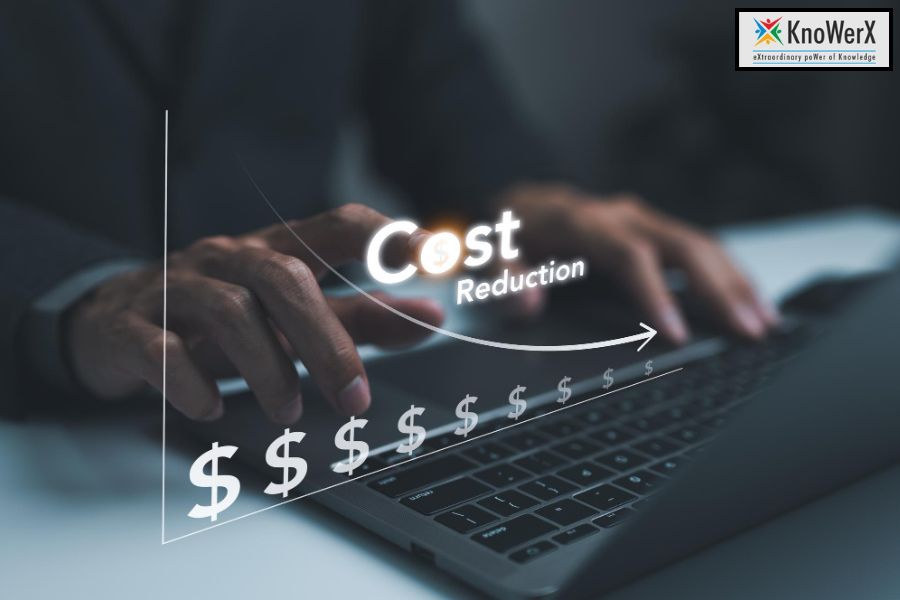
Top Cost Reduction steps in SCM: How Leaders Do It At KnoWerX, we believe that true excellence in supply chain management begins with smart strategies, continuous education, and strong leadership. One of the most vital aspects organisations strive for today is Cost Reduction in SCM. With global uncertainties and rising operational costs, leaders in supply chain management are actively pursuing ways to optimise spending without compromising service quality. Here are expert-backed tips on how leaders achieve Cost Reduction in SCM, shared through our deep experience of over 33 years in training and consultancy. 1. Leverage Data Analytics for Smarter Decisions The first step in effective Cost Reduction in SCM is visibility. Leaders harness the power of data analytics to gain insights into procurement patterns, supplier performance, transportation metrics, and inventory turnover. Tip: Use predictive analytics to forecast demand more accurately. This reduces excess inventory and minimises the risk of stockouts, helping maintain a lean supply chain. 2. Implement Lean Inventory Management Carrying excessive inventory ties up capital and adds storage costs. Industry leaders in supply chain management adopt lean practices that promote the Just-in-Time (JIT) approach. Tip: Analyse your inventory turnover ratio regularly. Low turnover indicates overstocking, while high turnover (with occasional stockouts) shows inefficiencies that need correction. 3. Optimise Supplier Relationships Strong supplier relationships are a cornerstone for Cost Reduction in SCM. Leading organisations collaborate with key suppliers for better pricing, shared risk management, and consistent supply. Tip: Conduct supplier scorecards to evaluate quality, reliability, and cost competitiveness. Consolidate purchases with preferred vendors for better pricing. 4. Invest in Supply Chain Automation Automation tools reduce manual errors, speed up processes, and offer real-time insights. Leaders in SCM invest in ERP systems, WMS (Warehouse Management Systems), and TMS (Transportation Management Systems). Tip: Begin by automating repetitive tasks such as invoicing, shipment tracking, and order confirmations. Automation not only saves time but also facilitates Cost Reduction in SCM across functions. 5. Choose the Right Transportation Strategy Transport expenses are a significant portion of logistics costs. Leaders evaluate their freight strategies carefully to avoid overpaying for speed they don’t need. Tip: Use a multi-modal shipping approach to lower costs. Combine road, rail, and ocean freight where applicable. Group shipments to benefit from bulk discounts. 6. Streamline Demand Planning Accurate demand planning aligns inventory with customer needs. Overestimating demand results in high carrying costs, while underestimating it leads to missed sales. Tip: Involve both sales and operations teams in demand forecasting. Include market trends and promotional plans to improve planning accuracy. 7. Enhance Collaboration Across Functions Silos lead to inefficiencies. Leaders in SCM foster cross-functional collaboration between procurement, logistics, finance, and production teams. Tip: Set up regular cross-departmental reviews to align on demand, capacity, and inventory plans. This improves communication and helps in Cost Reduction in SCM by avoiding duplicated efforts. 8. Adopt Sustainable Practices Sustainability isn’t just good for the planet it’s also good for cost. Reducing energy use, minimising waste, and optimising routes all contribute to Cost Reduction in SCM. Tip: Audit your carbon footprint. Consider eco-friendly packaging, route optimisation for delivery trucks, and energy-efficient warehousing solutions. 9. Benchmark Your Operations Understanding how your supply chain performs relative to industry standards is vital. Leaders often benchmark performance to identify areas for cost optimisation. Tip: Track metrics like order fulfilment cycle time, cost per order, and inventory accuracy. Use these KPIs to uncover inefficiencies and prioritise improvements. 10. Upskill Your Workforce An informed team is an empowered team. Educated employees can identify process bottlenecks, suggest improvements, and ensure accurate execution. Tip: Partner with industry experts like KnoWerX to provide professional training in SCM best practices. The ROI on training is tangible when teams apply smarter techniques for Cost Reduction in SCM. 11. Rationalise Your SKU Portfolio Having too many SKUs can complicate procurement, storage, and logistics. Leaders streamline their product offerings to reduce costs without impacting customer satisfaction. Tip: Conduct an ABC analysis to identify top-performing SKUs. Discontinue or consolidate low-performing items to reduce holding and handling costs. 12. Conduct Regular Supplier Audits Supplier inefficiencies directly affect your costs. Leaders ensure regular supplier evaluations to maintain performance and uncover hidden inefficiencies. Tip: Establish a system for regular supplier scorecards and audits. Negotiate better terms based on performance metrics and maintain backup suppliers. 13. Outsource Non-Core Activities Outsourcing is another strategy for Cost Reduction in SCM. Activities such as packaging, warehousing, and transportation can be handled by third-party logistics (3PL) providers. Tip: Evaluate the cost and efficiency of in-house vs outsourced activities. Choose partners with proven track records to ensure quality. 14. Focus on Root Cause Analysis Instead of treating symptoms, leaders focus on identifying and addressing the root causes of supply chain inefficiencies. Tip: Use Six Sigma tools like the 5 Whys and Fishbone Diagrams to conduct root cause analysis. Fixing the core issue leads to long-term Cost Reduction in SCM. 15. Invest in Technology Integration Disconnected systems cause duplication and data silos. Leaders invest in technology integration across procurement, production, warehousing, and distribution. Tip: Choose platforms that support seamless data flow and real-time decision-making. Integrated tech boosts visibility and helps in prompt corrective action. Partner with KnoWerX for Strategic Supply Chain Excellence At KnoWerX, our mission is to shape professionals who understand not only how supply chains operate but how to make them more cost-efficient, agile, and resilient. We offer professional certifications, training modules, and workshops tailored for leaders and emerging professionals looking to master Cost Reduction in SCM and beyond. With over 33 years of collective industry knowledge, we empower organisations and individuals with world-class education at the best value. Become the leader who doesn’t just manage costs optimises them strategically. Explore our courses today at www.knowerx.com and step into the future of intelligent supply chain management. Frequently Asked Questions Ending Notes: Be Future-Ready with KnoWerX As 2025 approaches, adopting the best procurement strategies is crucial for navigating volatility, uncertainty, and rapid change. From digitalisation to sustainability and risk resilience, these strategies empower professionals and businesses to thrive. At
Supply Chain Visibility: Stop Guessing, Start Knowing!
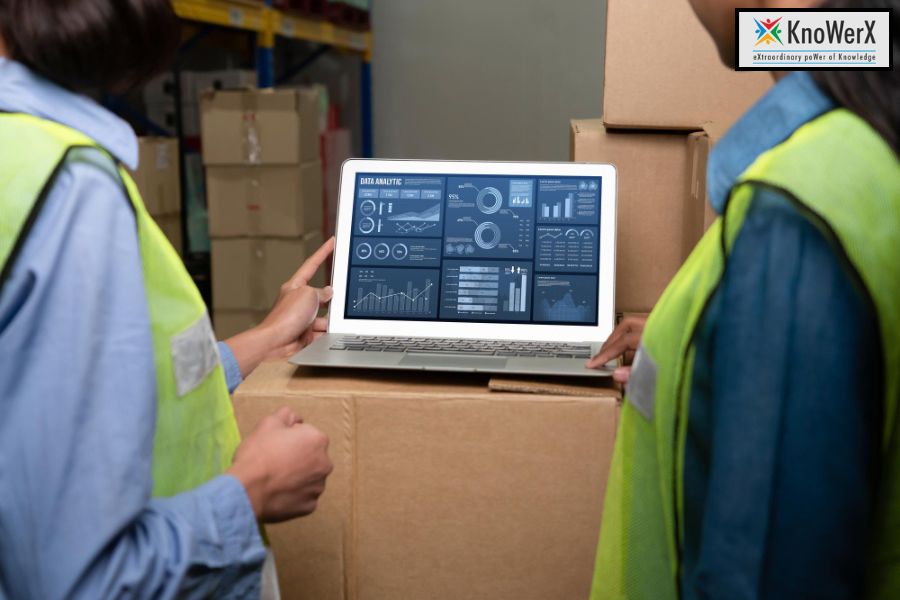
Supply Chain Visibility: Stop Guessing, Start Knowing! In today’s dynamic global market, one of the most critical factors that influence business success is Supply Chain Visibility. When organisations lack end-to-end insight into their supply chain operations, they are left making decisions based on assumptions instead of real-time data. KnoWerX, a pioneer in Supply Chain Management Training, brings you the top professional tips to enhance Supply Chain Visibility, eliminate guesswork, and create smarter, data-driven operations. With over 33 years of combined experience and a strong track record in educating and consulting businesses worldwide, KnoWerX empowers supply chain professionals with the tools and certifications they need to stay ahead. Why Supply Chain Visibility Matters Before diving into the tips, it is essential to understand why Supply Chain Visibility is such a powerful asset. It provides: Real-time data access across the supply chain Better demand forecasting and inventory management Enhanced supplier collaboration Quick identification of disruptions and bottlenecks Data-driven decision-making capabilities Improved Supply Chain Visibility translates directly into increased agility, better customer satisfaction, and optimised operations. Now, let’s look at some strategic tips to help you get there. 1: Implement End-to-End Tracking Systems Modern supply chains are complex, involving multiple stakeholders, geographies, and processes. An effective way to achieve Supply Chain Visibility is through end-to-end tracking systems. These systems help monitor products from production to delivery. Use IoT devices to track shipments and environmental conditions Leverage GPS for real-time transportation tracking Integrate barcode and RFID systems to maintain warehouse visibility By using technology that provides uninterrupted tracking, companies can ensure transparency and accountability at every stage. 2: Integrate All Supply Chain Systems Silos are the enemy of visibility. Companies often use disparate systems across procurement, logistics, inventory, and sales. To gain Supply Chain Visibility, integration is vital. Choose supply chain platforms that integrate ERP, WMS, and CRM Automate data sharing between departments Use APIs to connect third-party logistics and vendor platforms When systems communicate seamlessly, the supply chain becomes a network of transparent, coordinated processes. 3: Leverage Predictive Analytics for Smart Planning Predictive analytics can help companies forecast demand, identify patterns, and spot potential risks. This is a game-changer for Supply Chain Visibility. Analyse past trends to prepare for future demand fluctuations Use AI and machine learning for dynamic forecasting Visualise data using dashboards for easier decision-making Predictive tools allow organisations to shift from reactive to proactive operations, ensuring fewer surprises and more preparedness. 4: Develop a Control Tower Approach A supply chain control tower is a centralised hub of data, analysis, and oversight. This approach strengthens Supply Chain Visibility by providing holistic, real-time insights. Set up real-time dashboards for all supply chain KPIs Create escalation protocols for disruption alerts Involve all stakeholders in visibility protocols The control tower becomes the nerve centre that connects people, processes, and platforms, resulting in better coordination and response times. 5: Prioritise Supplier Visibility and Collaboration You can’t control what you can’t see — and that includes your suppliers. Establishing collaborative relationships with suppliers improves upstream Supply Chain Visibility. Encourage data transparency from your suppliers Share forecasts and inventory needs in real-time Conduct regular audits and performance reviews Building trust and mutual visibility with suppliers enables a more resilient and responsive supply chain. 6: Use Cloud-Based Supply Chain Platforms Cloud-based platforms are revolutionising how companies manage their supply chains. These platforms enhance Supply Chain Visibility by enabling real-time access to data from anywhere. Implement cloud-based SCM tools with multi-user access Ensure mobile accessibility for real-time decision-making Use cloud analytics for cross-functional insights Cloud solutions eliminate data lag and ensure that all supply chain partners are operating with the same information. 7: Train Your Team with Professional Supply Chain Programs Technology alone isn’t enough. Employees must understand how to use tools, interpret data, and apply insights. KnoWerX offers certified professional training to elevate your workforce’s capabilities. Enrol in KnoWerX’s certification programs on Supply Chain Management Learn how to implement visibility strategies with real-world simulations Equip teams with tools to adapt to changes confidently Training ensures that everyone in your organisation knows how to maximise Supply Chain Visibility for strategic benefits. 8: Establish Key Performance Indicators (KPIs) You can’t improve what you don’t measure. To enhance Supply Chain Visibility, establish and track KPIs that matter. Monitor order cycle times, fulfilment rates, and shipment accuracy Track supplier lead times and performance metrics Create weekly and monthly visibility reports for review KPI tracking helps identify inefficiencies and measure progress in visibility efforts. 9: Prepare for Risk and Disruption Management Visibility also means being prepared for the unexpected. Effective Supply Chain Visibility helps companies respond quickly to global disruptions. Conduct risk assessments for suppliers and logistics Create contingency and continuity plans Monitor geopolitical and environmental risk indicators With better visibility, your organisation can maintain resilience even in unpredictable circumstances. 10: Continuously Evolve and Optimise Supply Chain Visibility is not a one-time initiative — it’s a continuous process. As markets evolve, so should your visibility strategies. Regularly update software and systems Stay informed of new tools and technologies Gather feedback from users and stakeholders Constant evaluation and optimisation ensure that visibility remains aligned with business goals and market conditions. Frequently Asked Questions Ending Notes: KnoWerX – Your Partner in Achieving True Supply Chain Visibility In the age of digital transformation, guessing is no longer an option. Real-time, transparent, and intelligent supply chain operations are essential for growth. With a focus on Supply Chain Visibility, KnoWerX empowers professionals to “Stop Guessing, Start Knowing.” Whether you’re looking to upskill your team, earn globally recognised certifications, or transform your business operations, KnoWerX is your trusted partner. Our expert faculty, industry-aligned curriculum, and over 33 years of experience make us the go-to destination for Supply Chain Management excellence. Image Reference: Freepik Disclaimer: All trademarks, logos, and brand names are the property of their respective owners. All company, product, and service names used in this website are for identification purposes only. Use of these names, trademarks, and brands does not imply endorsement.
Understanding 4 Components of Inventory Management

Understanding 4 Components of Inventory Management At KnoWerX, we believe that mastering the fundamentals is key to unlocking long-term success in the world of supply chain and operations. With over 33 years of collective experience, our mission is to simplify complex processes and help professionals across industries become experts through our industry-leading training programs. One of the most essential areas in the supply chain process is It is the backbone of supply continuity and operational efficiency. In this article, we’ll break down the 4 core components of inventory management and share practical tips to understand and manage them effectively. 1. Inventory Control – The Foundation of Inventory Management Inventory control focuses on the regulation and supervision of stock to maintain the right balance – not too much and never too little. ✅ Tips for Effective Inventory Control: Establish Minimum and Maximum Stock Levels: Set threshold levels for each product to avoid overstocking and stockouts. Use ABC Analysis: Categorise inventory into three groups (A – high value, B – moderate value, C – low value) to prioritise control efforts. Implement FIFO or LIFO Methods: Use First-In-First-Out or Last-In-First-Out strategies depending on the nature of your inventory. Leverage Inventory Management Software: Invest in tools that automate stock monitoring, generate alerts, and provide real-time data. At KnoWerX, our inventory management training emphasises the importance of building a solid inventory control process that can be scaled as business needs grow. 2. Inventory Forecasting – Anticipate Demand Accurately Forecasting is the predictive component of inventory management, helping organisations estimate future demand and align inventory levels accordingly. ✅ Tips for Inventory Forecasting: Analyse Historical Sales Data: Review past data to identify seasonal patterns, sales cycles, and customer preferences. Collaborate Across Departments: Sales, marketing, and finance teams should all contribute to accurate demand forecasts. Factor in External Influences: Account for holidays, market trends, economic shifts, and promotional campaigns. Use Forecasting Software: Tools integrated with your inventory management system can improve accuracy through AI and machine learning. Professionals trained at KnoWerX learn to build data-driven forecasting models that ensure optimised inventory levels and reduce excess carrying costs. 3. Inventory Procurement – The Art of Timely Replenishment Procurement is about sourcing the right quantity of inventory at the right time and cost. It is a strategic component that directly impacts cost efficiency. ✅ Tips for Smart Inventory Procurement: Choose Reliable Suppliers: Build relationships with vendors who are consistent in quality and delivery timelines. Utilise Economic Order Quantity (EOQ): Calculate the most cost-effective quantity to order, balancing holding and ordering costs. Adopt Just-In-Time (JIT) Strategies: Reduce carrying costs by ordering inventory only when needed. Monitor Supplier Performance: Regular evaluations help ensure that procurement practices support efficient inventory management. With KnoWerX’s specialised training, professionals gain real-world insights into supplier selection, order timing, and cost negotiation to enhance procurement practices. 4. Inventory Auditing – Ensuring Accuracy and Accountability Auditing is the verification process in inventory management that ensures what’s recorded matches physical inventory. ✅ Tips for Thorough Inventory Auditing: Conduct Cycle Counting: Regularly count subsets of inventory to avoid year-end bottlenecks. Use Barcoding and RFID: Automate data entry and reduce human errors through technology. Implement Audit Trails: Maintain a digital trail of every movement and adjustment made in the inventory. Train Staff on Best Practices: Everyone handling inventory should understand the importance of accurate data. Our programs at KnoWerX prepare professionals to implement foolproof auditing systems that prevent loss, theft, and mismanagement. The Role of Technology in Inventory Management Digital transformation has reshaped inventory management. Technologies like AI, IoT, and blockchain are enabling real-time visibility, automation, and predictive analytics. ✅ Tips for Embracing Technology: Invest in Cloud-Based Inventory Solutions: Access data anytime, anywhere. Implement IoT Sensors: Gain real-time insights into stock movement and warehouse conditions. Use AI for Predictive Analytics: Forecast demand more accurately with machine learning algorithms. Integrate Systems: Ensure your inventory tools communicate with procurement, sales, and finance platforms. Inventory Management Metrics to Track To gauge the effectiveness of your inventory management strategy, monitor these essential metrics: Inventory Turnover Ratio: How often inventory is sold and replaced. Carrying Cost of Inventory: Total cost to hold inventory over a period. Order Accuracy Rate: Percentage of orders fulfilled without errors. Stockout Rate: How frequently items go out of stock. Tracking these KPIs helps in making informed decisions and highlights areas needing improvement Sustainable Inventory Management Practices As environmental concerns grow, sustainability is becoming integral to inventory management. ✅ Tips for Greener Inventory Practices: Minimise Overstocking: Reduce waste and obsolete inventory. Optimise Transportation Routes: Cut emissions with better logistics planning. Source Locally: Reduce carbon footprint and support local economies. Recycle and Reuse Packaging: Lower costs and promote eco-conscious branding. The KnoWerX Advantage in Inventory Management Training Understanding and mastering these 4 components of inventory management – control, forecasting, procurement, and auditing – is critical for any supply chain professional. At KnoWerX, we go beyond just teaching the concepts. Our programs include hands-on simulations, real-life case studies, and mentoring from industry veterans. 📌 Why Choose KnoWerX? 33+ years of expertise in education and consultancy. Global exposure, having trained professionals from large companies in India and abroad. Best-in-class pricing for the highest quality education. One-stop destination for certifications, domain knowledge, and career advancement in supply chain. Frequently Asked Questions Final Thoughts Effective inventory management is not just about keeping track of goods. It’s a dynamic discipline that requires strategic planning, technological integration, and continuous improvement. By understanding the 4 components of inventory management, professionals can contribute significantly to cost savings, operational efficiency, and customer satisfaction. If you’re looking to enhance your career in supply chain, consider enrolling in our professional training courses at KnoWerX. Learn from the best, and become the expert your organisation needs. Visit us today to explore our offerings and take the first step toward inventory mastery! Image Reference: Freepik Disclaimer: All trademarks, logos, and brand names are the property of their respective owners. All company, product, and service names used in this website are for identification purposes only. Use of
